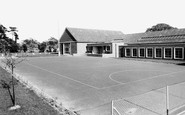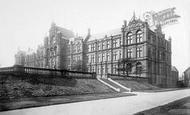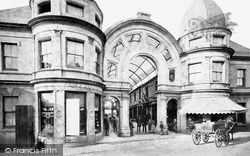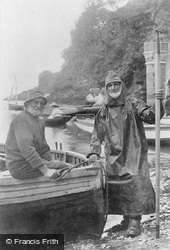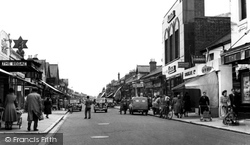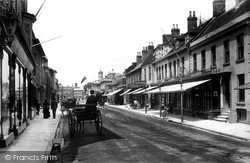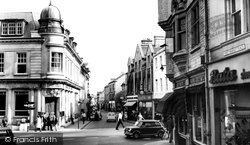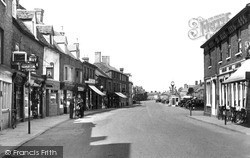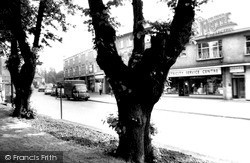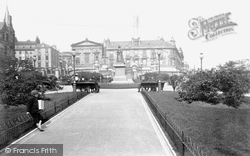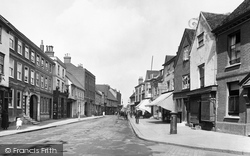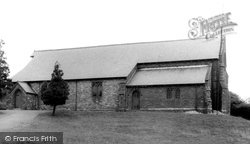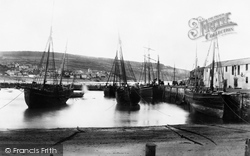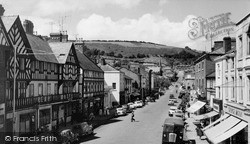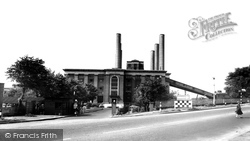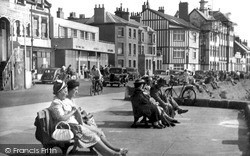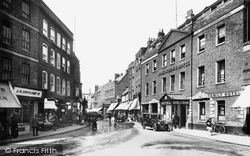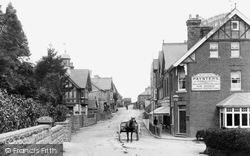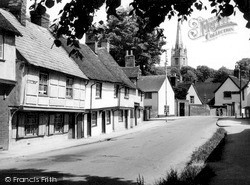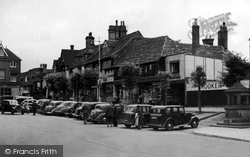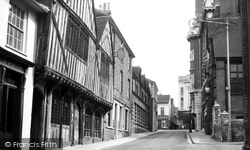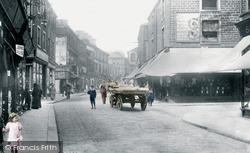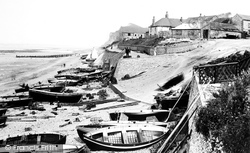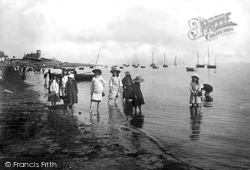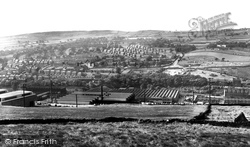Places
26 places found.
Those places high-lighted have photos. All locations may have maps, books and memories.
- Town End, Derbyshire
- Town End, Buckinghamshire
- Town's End, Somerset
- Towns End, Dorset
- Town End, Merseyside
- Town End, Cambridgeshire
- Town's End, Buckinghamshire
- West End Town, Northumberland
- Bolton Town End, Lancashire
- Kearby Town End, Yorkshire
- Town End, Cumbria (near Grange-Over-Sands)
- Town End, Cumbria (near Bowness-On-Windermere)
- Town End, Yorkshire (near Huddersfield)
- Town End, Yorkshire (near Wilberfoss)
- Town End, Cumbria (near Appleby-in-Westmorland)
- Town's End, Dorset (near Melbury Osmond)
- Town's End, Dorset (near Swanage)
- Town End, Cumbria (near Ambleside)
- Town End, Cumbria (near Lakeside)
- Town End, Cumbria (near Kirkby Lonsdale)
- Town End, Cumbria (near Ambleside)
- Town's End, Dorset (near Bere Regis)
- West-end Town, South Glamorgan
- Townend, Derbyshire
- Townend, Strathclyde (near Dumbarton)
- Townend, Staffordshire (near Stone)
Photos
23 photos found. Showing results 3,221 to 23.
Maps
195 maps found.
Books
3 books found. Showing results 3,865 to 3.
Memories
3,719 memories found. Showing results 1,611 to 1,620.
The One Bell
Hi to all. The public house in the centre of town, where the policeman stood directing traffic was The One Bell. Next door was a shop called the Maypole and next to that was The Royal Victoria and Bull Hotel. Richard Trevithick ...Read more
A memory of Dartford in 1950 by
Bandstand
Many happy hours were spent playing on the banks and the bandstand. We used to love it when it was time for the brass band to come and play. Football games and hide and seek, in the many bushes - come winter time it ...Read more
A memory of Bradley in 1960
Court Lees
Court Lees - Does that name ring any bells? All the boys, every Sunday, came down a long lane on 'Shanks Ponies' and went to church in the village. Mr Fish was the headmaster around late forties early fifties; a very nice man but it deteriorated when he left around 1953.
A memory of South Godstone by
Accidents At School
I remember the fence in between the two playgrounds as one was lower than other; there were steps to go down. One morning I came in the top gate, my friends came in bottom gate and so I ran down to meet them but ...Read more
A memory of Hurst Green in 1960 by
St Mary's School
I lived in Hornsey up until 1960, I attended St Mary's School, Priory Rd (Hornsey High street?) I finished with school there in 1950 and was there four or five years? I think the headmaster was Mr Ball(?) There was a music teacher ...Read more
A memory of Hornsey in 1950 by
Cycling Through Brentford
Cycling over Kew Bridge I turn left towards Brentford. I feel anticipation of passing through an interesting town. First on the left is the Gasworks. I get a liitle bit of soot in my eye. I pause at the big green ...Read more
A memory of Brentford in 1959 by
My Young Life At Rilla Mill
I was born at Rilla Mill on the 1st of September 1934 in what was, in those days, the Police Station. This house was opposite the Manor Inn. My father was the local policeman, and he was called Ewart Pearce. His ...Read more
A memory of Rilla Mill in 1930 by
School Memory
I remember traveling to new Tredegar by train from Bedwas, changing trains at Pengam to let Lewis girls off. I remember police keeping Lewis girls in the front corridor coach to stop us mingling. They tried it with compartment ...Read more
A memory of Tirphil in 1961
Schooldays
I attended St. Joseph's College in nearby Ledsham and one day Brother Brown walked us all down to Rivacre Baths, which was absolutely freezing! Another school was visiting at the same time and offered to take us part of the way ...Read more
A memory of Little Sutton in 1966 by
Lady Well Flats
I remember them well, we lived in Easton House after being moved from Melbourne Street, Ordsall. I delivered the papers up and down all those stairs for half of the blocks every day before school and then after school. My teenage ...Read more
A memory of Salford by
Captions
5,054 captions found. Showing results 3,865 to 3,888.
As with so many seaside resorts of the 19th century, Bournemouth attracted a wealthy and fashionable clientele.
The town was an important medieval port, and copper-ore and granite were once exported from its quay.
Originally a village, Eastleigh expanded rapidly around Bishopstoke Junction after the London and South Western Railway Company's carriage works moved here in 1889-90, followed by the locomotive
Christchurch's High Street boasts much fine Georgian and Victorian architecture. Leading up to the castle and priory church, the High Street has always been the focus of the town.
One of the town's main shopping areas, Cricklade Street is also home to the Brewery Arts Centre, which opened in 1979.
Ramsey in the 1950s was a thriving Fenland town, but it has now declined. Barclays Bank (right) still stands on the corner of Little Whyte, but the other traders have all gone.
The town's past industrial importance was partly based on an unpleasant speciality, the manufacture of traps.
Dunn Square is a haven of tranquil peace amidst the bustle of a busy town centre.
This was once the town's market place. The later brick frontages here often conceal 16th- and 17th-century timber-framed buildings that had been plastered for preservation.
The parish church of Brynmawr is the church of St Mary the Virgin, and it was opened by the licence of the Bishop of St David`s in January 1850.
AS YOU JOURNEY eastwards from the sedate and literary little town of Lyme Regis towards the sandy beaches and urban sprawl of Bournemouth, you become aware that this beautiful Dorset coast has been
Factories were built for carding and spinning machines, and the town became a major centre for handloom weaving. Robert Owen, the social reformer, was born here and died here in 1858.
Ferrybridge is ideally placed for a major power station - coal could be delivered on the adjacent River Aire, and so from 1927 for thirty years Ferrybridge 'A' Power Station, seen here, generated
One of these very similar views shows the town on a bright summer day with the road thronged with vehicles and the pavements, benches and sea wall busy with visitors enjoying the Cheshire sunshine and
The town is brimming with Georgian architecture - symmetrical red-brick buildings with large sash windows, typified by the classical facade of the Rose and Crown Hotel (the building itself is a good deal
Crowborough's rapid development from the mid Victorian era started from the arrival of the railways and the rise of the commuter.
These are the first houses we see as we enter the town from the north; they have been described as 'an outstanding group of mostly 15th- and 17th-century timber-framed buildings'.
In July 1943 the town received attention from the Luftwaffe, but the only building to be destroyed in the High Street was Brooker Bros premises, still not replaced when this picture was made.
This view has the old Angel Inn on the left and the former library; beyond is the wonderful town hall.
New shopping arcades were established along Low Street and North Street at the turn of the century, as the town's population continued to enjoy the fruits of the cotton boom years.
As tourism expanded, and smart visitors arrived in ever greater numbers, such unti- diness was frowned on by local businesses—the town had to smarten up its image.
The oldest holiday town in Devon, Exmouth was popular by the early 17th century; it grew enormously during when the Napoleonic wars closed the Continent to our gentry, who had to holiday somewhere.
Adjacent to Stocksbridge, this town was built on quarrying and the brickworks.
Most of the town's finest buildings are Georgian - the woollen mills and the merchants' houses. Bath stone was used for many of the buildings.
Places (26)
Photos (23)
Memories (3719)
Books (3)
Maps (195)

